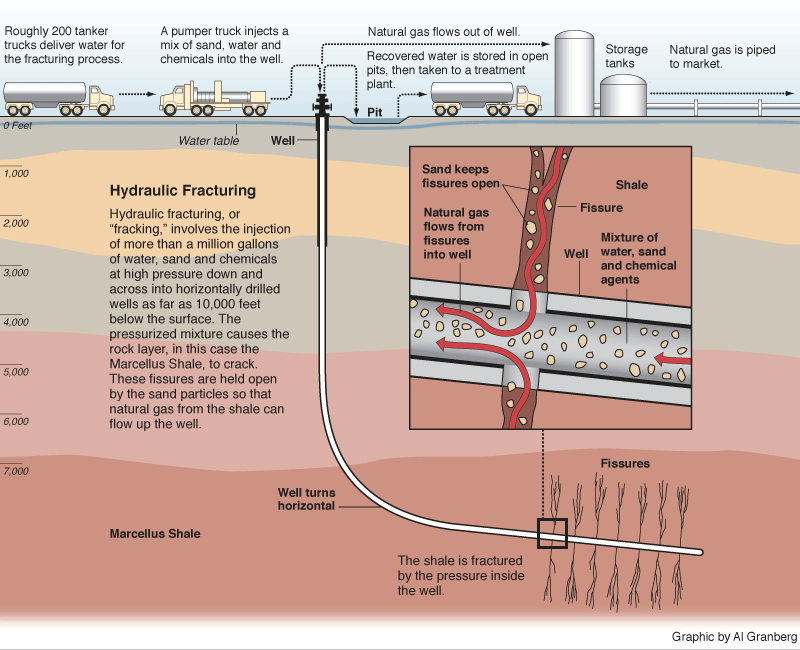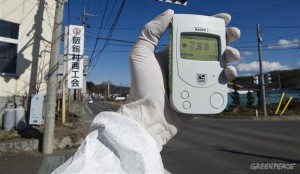For the final class experiment I choose the experiment called Temperature and Heating Lab : Radiation and Color. The group leader explained that this experiment was done in order to see what color paint would be the most efficient in absorbing radiation and creating a low temperature for the household. This system would be used in the summer. To test out this theory the group brought four thermometers, markers in four colors, a lamp and a timer. What we had to do was color the outer shell of the thermometer case with the marker. Then we put them directly underneath the lamp for 20 minutes. The thermometers were set at 27 degrees. Afterward we checked the temperature to see which one had the lowest temperature and would be the most efficient. Going into the experiment, I hypothesized that the black thermometer would be the most efficient because it does not have a reflection. To my surprise the most efficient turned out to be the green thermometer. The black had a temperature of 42 degrees Fahrenheit and green had a temperature of 40 degrees Fahrenheit. turns out that green is in the middle of the color spectrum, therefore the properties of absorption and reflection are leveled to create a steady temperature. I never thought that a specific color could effect the temperature of a house. It was very interesting to me. I think that this concept could work, but it would have to be put into place, in an area of constant heat. Anywhere, that has a change in season would need a change in temperature. In winter the house would always be cold. Coal and other methods of heat production would be used. This would effect the environment and defeat the purpose of painting for a “greener” house. The good news is that it can be used in some parts of the world. Some areas have now started to paint their roofs with what are called “cooling colors”. These are green, red, and black. They have used different materials, like aluminum to cool down the houses. It is a very fascinating process, which is why I decided to try out this experiment.
Fruit/Battery Experiment
 We utilize all sorts of batteries throughout our everyday lives. Cars, cellphones, and digital watches are all powered by some sort of battery. With that said, we were curious what kind of basic principles create a “battery.” A battery is a container that consists of one or more cells that produce an electro-chemical reaction when connected to a device. The experiment we chose was to create a battery out of a fruit (lemons, limes, oranges, bananas) using carbon as the constant element and switching out various conductive metals (zinc, copper, iron) as the second element. We hypothesized that the lemon would have the highest pH level and thus would generate the highest amount of voltage. Conversely, we had guessed that a banana would produce the least amount of voltage. For the experiment, we utilized a multi-meter to measure the voltage of each fruit and metal combination. Our results were fairly surprising. On average, copper was the least conductive metal – generating only .1 volts when implanted in a lemon. The galvanized (zinc-coated) nail produced the highest readings – producing .84 volts when implanted in an orange. The most surprising aspect of our findings was that the banana produced fairly high readings on the multi-meter. This is because the ascorbic acid found in a ripe banana tends to have a fairly higher pH level than the citric acids found in the other fruits.
We utilize all sorts of batteries throughout our everyday lives. Cars, cellphones, and digital watches are all powered by some sort of battery. With that said, we were curious what kind of basic principles create a “battery.” A battery is a container that consists of one or more cells that produce an electro-chemical reaction when connected to a device. The experiment we chose was to create a battery out of a fruit (lemons, limes, oranges, bananas) using carbon as the constant element and switching out various conductive metals (zinc, copper, iron) as the second element. We hypothesized that the lemon would have the highest pH level and thus would generate the highest amount of voltage. Conversely, we had guessed that a banana would produce the least amount of voltage. For the experiment, we utilized a multi-meter to measure the voltage of each fruit and metal combination. Our results were fairly surprising. On average, copper was the least conductive metal – generating only .1 volts when implanted in a lemon. The galvanized (zinc-coated) nail produced the highest readings – producing .84 volts when implanted in an orange. The most surprising aspect of our findings was that the banana produced fairly high readings on the multi-meter. This is because the ascorbic acid found in a ripe banana tends to have a fairly higher pH level than the citric acids found in the other fruits.

Brian Brewster, Kim Wallace, Joe Cesaro, Joe Scolley
Pandora’s Promise
Pandora’s Promise raises awareness about nuclear energy, its systems, and how it works in the past, present, and future. The movie outlines the importance of Nuclear energy which has being dramatize as something like a weapon against the world, and wants now the people to see that is less dangerous and more convenience in the fact of leaving fossil fuels which we see now how their are affecting strongly our environment.
The movie explains that in the next few decades, humankind will need to increase energy production as billions of people in the developing world lift themselves out of poverty and begin to live modern lives. Stressing the use of new energy to be clean and non-CO2 emitting to lower the risk of triggering a devastating global climate catastrophe is a main goal.
Robert Stone, a reporter for CNN, commented on the movie and its motives stating his opinions. Stone opinionated that Edwin Lyman, a scientist whom critically disagrees with the film, and others seem to suggest that nuclear energy is hopeless and that all research and development into its advancement should be abandoned, period, and that we should throw all of our efforts into renewables and energy efficiency alone. Given the overwhelming challenges we face in attempting to power a planet of almost 9 billion people with clean, affordable, non-CO2-emitting energy, that’s about the most irresponsible course of action imaginable.
Fukushima
First off, I’d like to address the fact that before being assigned this topic I was unaware of the Fukushima disaster and after speaking with roommates, friends, and colleagues, most are still unaware of the tragedy. Following a major earthquake in March 2011, a 15-metre tsunami disabled the power supply and cooling of three Fukushima Daiichi reactors. This natural disaster caused a nuclear accident on the 11th of that month. All three cores largely melted in the first three days. Radioactive releases continued to flow over days 4 to 6 eventually taking the accident rating from a 7 on the INES scale to a total of 940 PBq. After two weeks the three reactor units 1-3 were stable with water addition but no proper heat sink to remove decay heat from fuel. In the next few months, by July, they were being cooled with recycled water from the new treatment plant. reactor temperatures has fallen to below 80 degrees celsius towards the end of October. Apart from cooling, which wasn’t officially shutdown and announced till mid-december, the basic task ongoing was to prevent release of radioactive materials, particularly in contaminated water leaked from three units.
Since the accident of “3.11”, Japan has been trying to develop a new national energy policy; but even three years later has failed to adopt a new policy. While this may concern most it doesn’t come as a surprise given that developments in energy capacity and infrastructure are normally measured in decades, not years. Even as history shows, Japan is not the quickest to move on substance issues like this as it failed to do so in 1986 after Chernobyl. The implications of the Fukushima disaster continue to be felt around the world, particularly for the nuclear energy industry. Forty-eight of Japan’s 50 nuclear reactors remain off-line today. The NRA began revising safety standards over the summer of 2013, that the operators of reactors had complied with.
In conclusion I believe Japan’s energy challenge over the next several years should indicate setting a clear energy for the future, and building strategies to execute the vision exploiting Japan’s world-beating technologies to benefit the people of its own islands, future generations of Japanese.
References:
http://worldnews.nbcnews.com/_news/2013/10/03/20797895-water-6700-times-more-radioactive-than-legal-limit-spills-from-fukushima?lite
http://en.wikipedia.org/wiki/Fukushima_Daiichi_nuclear_disaster
http://www.theguardian.com/environment/2013/dec/03/fukushima-daiichi-tsunami-nuclear-cleanup-japan
Solar Energy
In class we partook in a small solar experiment in which we connected a small solar cell to the NXT adapter to measure the cells voltage with a probe. Placing a flashlight at varying distances from the solar cell we collected data aligned with each attempt. The chart below exhibits that the voltages acquired by the solar cell gradually decreases as the flashlight is distanced further away.
Placing for different colored film filters over the flashlight for the specific distances measures how different light spectrums affected the voltage of the solar cells. 
After conducting the experiment in the same manner as we did for our first data collection, we came across these results for the colored filters;
Hydrofracking
When you hear the term Hydraulic Fracturing, or Hydrofracking, most of us shrug our shoulders in unfamiliarity as the topic is one that is unknown to most. Hydraulic fracturing, or hydrofracking, is a technique in which water is mixed with sand and chemicals, and the mixture is injected at high pressure into a drilled hole to create small fractures in attempt to extract natural gases from the earths core. Hydrofracking being a fairly new technique has many problems that most have not taken into consideration or even know about.
The “reason” for hydrofracking is that we can now extract up to 6-8 million more gallons of water than that of the regular drilling process. Unfortunately, how much of this is actually healthy? In the process of hydrofracking a chemically bound substance called “slick water” is used to increase the fluid flow during extraction. Due to the use of slick water there is a highly increased possibility for toxicity and long-term effects as well as environmental effects that affect the water.

Fracking Effluent Pit.
The main concern with hydrofracking is the fact that the drills can hit water sources and contaminate our water due to the use of these drilling chemicals. “Also, gas companies claim the natural gas that is found from hydrofracking is a clean source of energy. This is only partially correct because while natural gas does burn more cleanly, the extraction process of hydrofracking releases a lot of methane (CH4) into the atmosphere and Methane is known to be amongst the leaders in greenhouse gasses. Between hitting water sources and releasing greenhouse gasses, the process of hydraulic fracturing can be and often is harmful to both our environment and health.”

Sources;
“Neighbors of the Onondaga Nation.” What Is Hydrofracking? N.p., n.d. Web. 14 Oct. 2013. <http://www.peacecouncil.net/NOON/hydrofrac/HdryoFrac2.htm>.
“Donate.” Top Stories RSS. N.p., n.d. Web. 14 Oct. 2013. <http://www.propublica.org/special/hydraulic-fracturing-national>.
“EPA.” Hydraulic Fracturing. N.p., n.d. Web. 14 Oct. 2013. <http://www2.epa.gov/hydraulicfracturing>.
Technologies Increasing Fuel Economy
When we think of good gas mileage we often think of small compact vehicles and often hybrid and electric vehicles. As true as these resources are, automotive companies are doing more than just this while adding in some uncommon factors. Automakers are employing a number of technologies to improve fuel economy. These range from turbocharging an engine, to improving the transmission, to electrifying specific components.
To improve fuel economy it goes beyond an idea. Beyond the ideas of electric or hybrid but to the point where engineers are looking at every part of the drive cycle to see where changes can be made. Often, cars that have superchargers and turbochargers on top of various transmissions see the need for higher, more expensive, grade fuels and tend to burn these expensive grades faster due to high engine power. Instead of directing attention away from these things, engineers are now actually looking to use these uncommon parts in hopes of increasing fuel economy. Through refining superchargers and turbos, they are taking advantage of new materials and computing power. With the help of newer innovations such as idle stop and dual-clutch transmissions, these old chargers are becoming the best way to save fuel, and money.
“A number of factors are helping push these developments. Consumers are trying to cope with increasing gas prices, and governments are pushing for reduced carbon dioxide emissions, which relate directly to fuel economy.” – Wayne Cunningham
Idle stop is one of the new innovations thats making a large impact on boosting fuel economy. Normally, when you pull up to a stop light or come to any sort of halt, your moves on its own even with your foot off the gas after releasing the break; this is called an idle. Idle stop saves fuel by shutting down the engine when the car is not moving, such as at a stop light. When you depress the foot brake for a stop, the engine shuts off. When you let the clutch out or take your foot off the brake, the engine starts up again. Idle Stops are still limited in full gas vehicles and see some issues but that stop german motor companies such as BMW from using. Idle-stop systems work poorly in stop-and-go traffic, where they cause engines to turn on and off multiple times within minutes. As this posses a bit of an annoyance, for most drivers this is still worth while.
Dual-Clutch Transmissions, derived from race car technology, combines the efficiency of a manual transmission with the convenience of an automatic. The dual-clutch transmission uses two clutches to grab gears more efficiently; one grabbing the even number gears, and the second grabbing the odd. When one clutch has third gear engaged, for example, a computer looks at driver input to help it guess which gear should be engaged next, two or four, pre-positioning the second clutch over that gear. The major benefit, and purpose, of a dual-clutch transmission is to eliminate the delay time it takes a driver to to work a manual clutch pedal. Although primarily used on performance cars, dual-clutch transmissions are starting to be used for fuel efficiency.
“Technologies to Boost Gas Mileage Extend beyond Hybrid Cars.” Technologies to Boost Gas Mileage Extend beyond Hybrid Cars. N.p., n.d. Web. 25 Sept. 2013. <http://www.bankrate.com/finance/auto/hybrids-not-the-only-answer-1.aspx>.
“Energy Efficient Technologies.” Energy Efficient Technologies. N.p., n.d. Web. 25 Sept. 2013. <http://www.fueleconomy.gov/feg/tech_adv.shtml>.
“11 Technologies That Increase Fuel Economy.” The Car Tech Blog. N.p., n.d. Web. 25 Sept. 2013. <http://reviews.cnet.com/8301-13746_7-20113969-48/11-technologies-that-increase-fuel-economy/>.
Prices Up, Emissions Down.
We’re often told to recycle and reuse to cut back on waste, pollution, and bad emissions to the environment. But Germany’s renewable energy sector is among the most innovative and successful worldwide. This green energy policy also known as “energiewende” encourages countries to move away from fossil fuels and to use more renewable energy sources such as solar, wind and water. The share of electricity produced from renewable energy in Germany has increased from 6.3 percent of the national total in 2000 to about 25 percent in the first half of 2012. While yes, this is the worldwide leading example its costing residents more than ever. Since 2000 the average household electric bill has raised almost 85 percent a month in fees. However, citizens are seeing the benefits of “energiewende” and seem to be ok with the price increase.
One thing that is becoming cheaper is the operation of coal-fired power plants. Although the energiewende’s goal is to reduce carbon dioxide emissions, Germany’s CO2 emissions rose last year as an affect of this. Much of the new renewable energy production is set to be built in the north, which will require new high voltage power lines to transport the electricity to the industrial south; and in return will again bump the electrical bills through the roof.
As many financial problems are pointed out and are obvious, the major goal of this, which is to cut back on negative emissions to the environment , is being solved everyday in high numbers. As for now, it seems energiewende is doing just fine, with prices up and emissions down.
Hello world!
Welcome to Blogs.cas.suffolk.edu. This is your first post. Edit or delete it under Manage>Posts or make a new one under Write>Posts then start blogging! Be sure to visit the Design tab to choose a new look for your blog as well.
Also, for immediate “how-to’s” visit the Tutorials section, or the Getting Started section.






